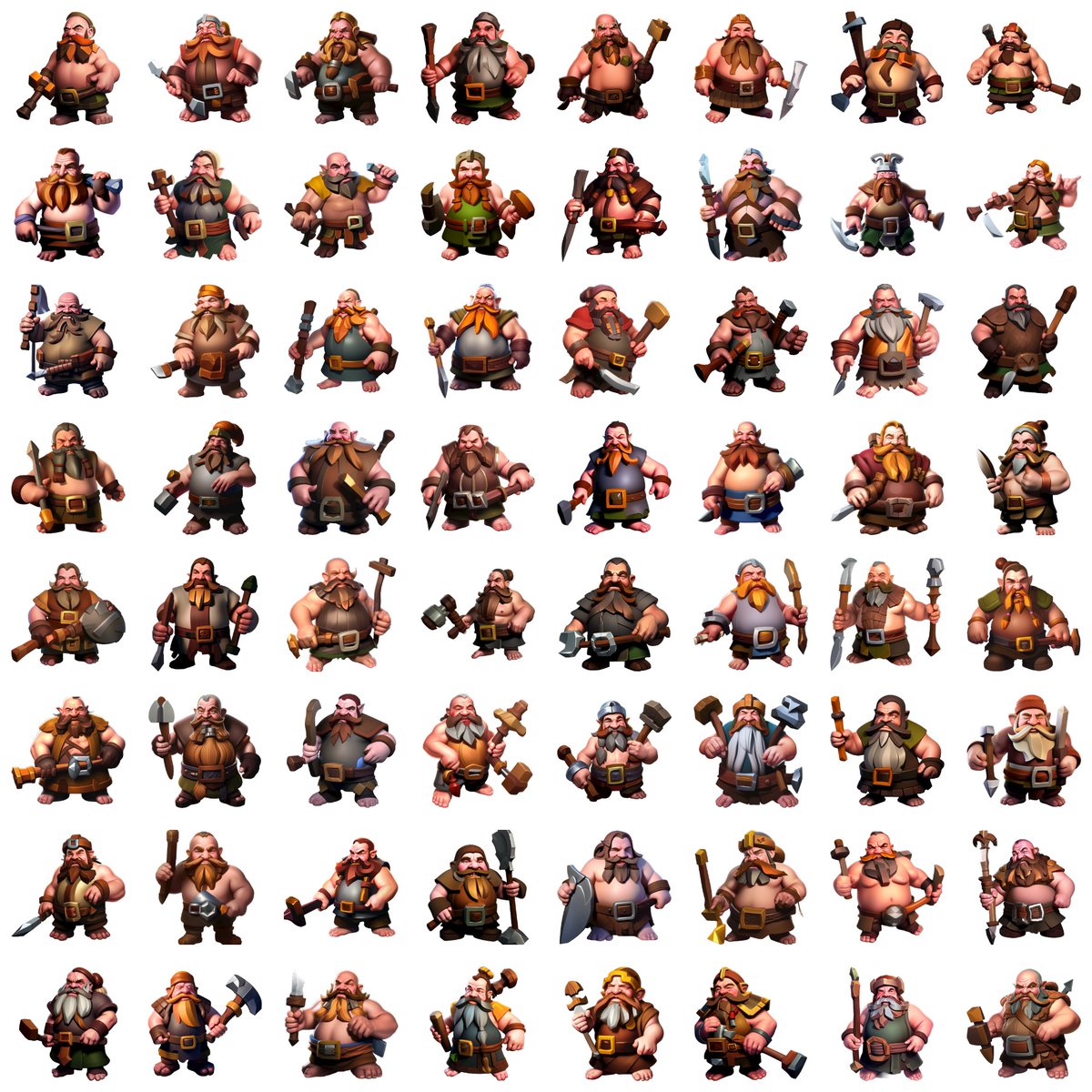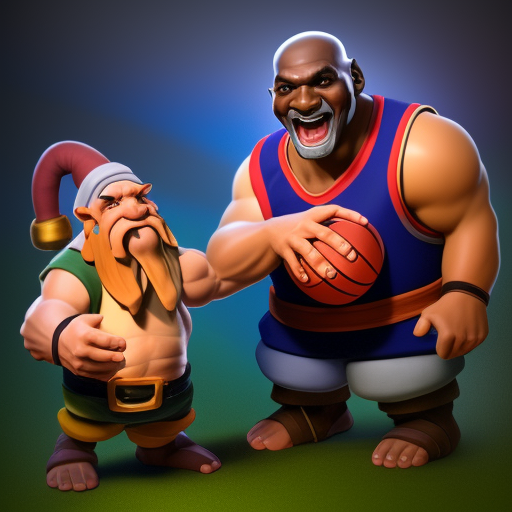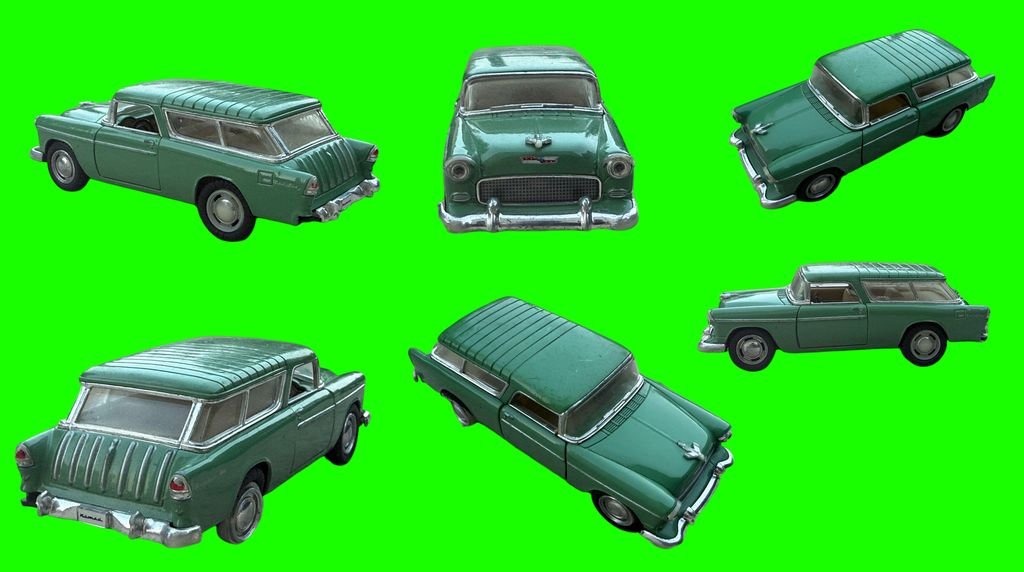I've done a first pass on the dwarves, and they're fun.
This proves again that #AI / #StableDiffusion is a fantastic tool for designing and creating #game assets... when adequately fine-tuned.
Here's some of the exploration, so far - 🧵
This proves again that #AI / #StableDiffusion is a fantastic tool for designing and creating #game assets... when adequately fine-tuned.
Here's some of the exploration, so far - 🧵
https://twitter.com/emmanuel_2m/status/1589176738227310595

The model was trained on just 11 pictures (!), with only 1500 training steps, which tuned out to be quick (20 min).
As before, the first step is to "explore“ the model with a few generic prompts. The goal is to find the modifiers that will keep a consistent style going forward.
As before, the first step is to "explore“ the model with a few generic prompts. The goal is to find the modifiers that will keep a consistent style going forward.

Once the "stable modifiers" are found, it's time to select some of the best output and remove the background when needed.
"A dwarf, detailed, trending on Artstation, Clash of Clans"👇

"A dwarf, detailed, trending on Artstation, Clash of Clans"👇


You can add accessories or pose, for example: "A dwarf lord sitting on a throne". You get images with the throne... and the crown. 

This is a group of dwarves that bear an axe 🪓 (... supposedly - since none of the pictures in the training dataset had an axe, I'm not getting the best results here) 

You can play with expressions too. Include "laughing" in the prompt, and you'll get characters like the ones below (male or female, btw) 



Of course, I had to try my zombie trick: "a zombie dwarf, trending on Artstation, clash of clans".
Zombify everything.

Zombify everything.


Let's not forget img2img. this was a test to reproduce Russel Crowe's famous moment in Gladiator... "Are you not entertained?" 



You can change the colors of the clothes simply by adjusting the prompt: green, blue, red... or bare chest 







And then there's always the "fun and creative" stuff like having your characters play cricket 🏏, basketball 🏀, curling 🥌 or bobsled 🛷 







This is not just about single characters, they can be generated in groups ("Dwarves in a gold mine, detailed, trending on Artstation") 







And I could keep going on and on, but some other datasets are waiting :)
While images might not be final, this can accelerate design or prototyping processes. I also see RPG communities using this to build entire worlds "in the style of the game", without erratic prompting.

While images might not be final, this can accelerate design or prototyping processes. I also see RPG communities using this to build entire worlds "in the style of the game", without erratic prompting.


If you like this thread, please feel free to like/RT or share any thoughts below.
Follow for more explorations on how to use #StableDiffusion and #Dreambooth to accelerate your game creation process 🚀
#AI #GenerativeAI #Gaming
Follow for more explorations on how to use #StableDiffusion and #Dreambooth to accelerate your game creation process 🚀
#AI #GenerativeAI #Gaming

• • •
Missing some Tweet in this thread? You can try to
force a refresh





















